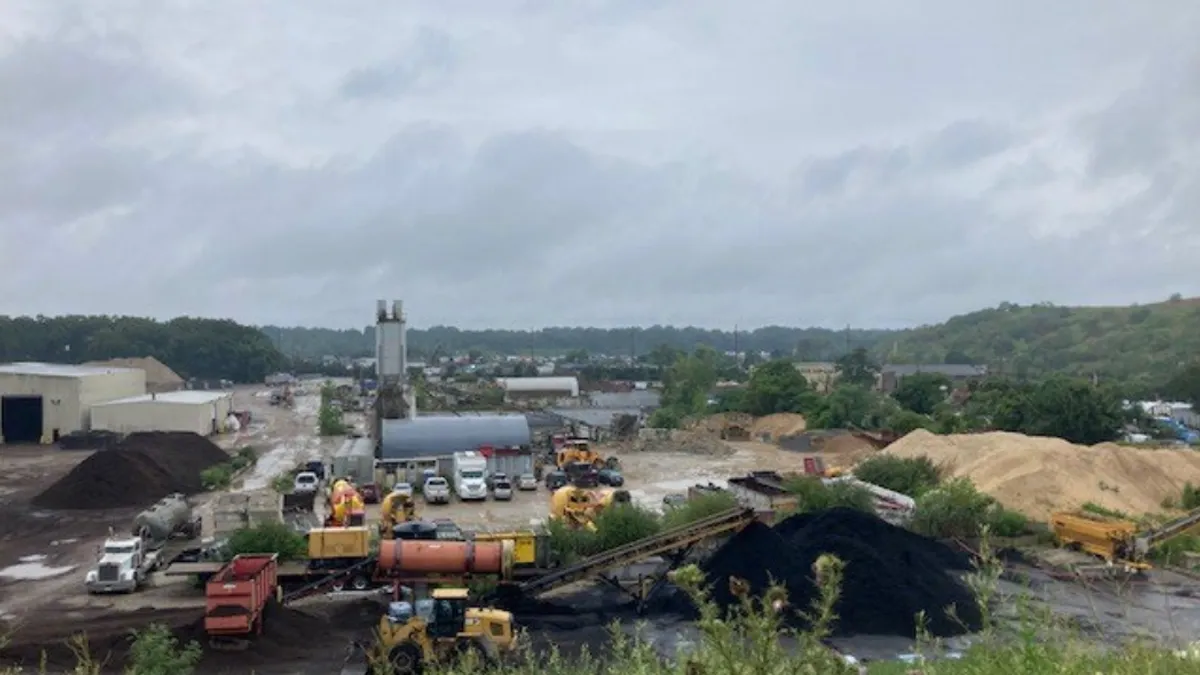Dive Brief:
- The Brookhaven Landfill on Long Island, New York, may get two extra years of life to accept incinerator ash, newly elected Town Supervisor Dan Panico told Newsday last week. Panico is seeking an extension of the landfill’s permit that would allow it to remain open until 2027 or 2028, rather than its current permit expiration on July 11, 2026.
- Local leaders are working to find alternative disposal capacity for incinerator ash from the Covanta-run facility in Westbury that handles much of Suffolk County’s waste. Panico also confirmed the landfill would stop accepting C&D waste — which constitutes 65% of the waste accepted at the landfill annually — by the end of the year.
- The permit extension will buy extra time for private industry solutions to press forward. Carlson Corp., a longtime Long Island C&D and organic waste processor, has applied for federal permission to construct a rail terminal to process and ship waste off the island. Winters Bros. has also floated a proposal for a rail terminal adjacent to the Brookhaven Landfill.
Dive Insight:
Long Island’s disposal capacity challenges are emblematic of broader difficulties with identifying disposal capacity in the Northeast, where rail has increasingly been deployed to ship waste farther out of the region.
Under New York’s Long Island Landfill Law passed in 1983, the area with more than 7.6 million residents was banned from building new landfills and ordered to close all but two, the Brookhaven and Babylon landfills, by 1989. With the Brookhaven Landfill set to reach capacity in a few years, local leaders need to find alternatives.
Public-sector solutions may be in the works. Suffolk County Executive and former Brookhaven supervisor Ed Romaine has discussed the possibility of a regional solid waste plan, and advocates are hoping to reignite an effort to get New York to certify incinerator ash for beneficial use.
But the end of C&D waste disposal at Brookhaven is the first deadline the town will face. The amount of waste in need of a new destination is slightly uncertain due to the whims of the construction market, said Christine Fetten, commissioner of Brookhaven’s Recycling & Sustainable Materials Management division.
The landfill accepted about 470,000 tons of C&D waste in 2023, down from about 600,000 tons of C&D waste the prior year, according to Fetten. She said rail is “not going to take the whole burden” of that waste moving forward, noting improved materials recycling at C&D transfer stations could also help absorb some of the added need.
“We all have a part to play, but the market really is going to guide this in terms of pricing and efficiency,” Fetten said.
Frank Roethel, director of Stony Brook University’s Waste Reduction and Management Institute, also expects the private sector, including businesses like the county’s 110 Sand & Gravel, will likely step in to provide recycling and transfer capacity in the interim. He cautioned that trucking waste off Long Island would likely be inefficient for some, given limited destinations within range.
Carlson Corp. has taken steps to build a partial solution to the challenge. Its proposed Townline Rail Terminal in Kings Park, which recently received an environmental assessment from the Surface Transportation Board, would accept incinerated ash waste from two towns, Huntington and Smithtown, per a company website. The ash is currently disposed at Brookhaven landfill.
Winters Brothers, which did not respond to a request for comment, has also proposed a rail transfer station. Its 6,000-ton-per-day site would be located adjacent to the Brookhaven Landfill and an adjoining MRF. To advance the project, it has acquired two rail transfer stations in Lindenhurst and Farmingdale from WIN Waste Innovations, as well as a Class 3 railroad.
Roethel said added capacity will help alleviate the island’s burden, but the state also needs to revisit a beneficial use determination for incinerator ash. He noted that Pennsylvania currently reuses about 60% of its incinerator ash, and that allowing the same on Long Island would reduce the need for new disposal capacity.
Adrienne Esposito, executive director of the Citizens Campaign for the Environment, also said the region needed to identify alternatives to disposal in order to meet capacity challenges. She said her organization “like[s] rail more than we like trucks” to ship waste off the island, but she was skeptical that the county needed Winters Bros.’ proposed capacity.
Instead, she said that pursuing a countywide approach to waste would create an economy of scale that could be more attractive to more circular solutions like glass recycling. She also supported seeking a beneficial use designation for ash, noting both ash and glass could be used to replace sand mining, among other uses.
The Citizens Campaign for the Environment also backs the proposed Packaging Reduction and Recycling Infrastructure Act, which would enact a statewide extended producer responsibility system for packaging.
Fetten, with Brookhaven, also supports such a move. But more broadly, she said the town needs to make sure it “doesn’t put all its eggs in one basket” for any solution to its waste.
“Redundancy in the system is good,” Fetten said. “We will have a lot more waste to contend with. If we don't find a solution for ash reduction or disposal, and if we go to a different route, we need the time to prepare in order to make that happen.”















